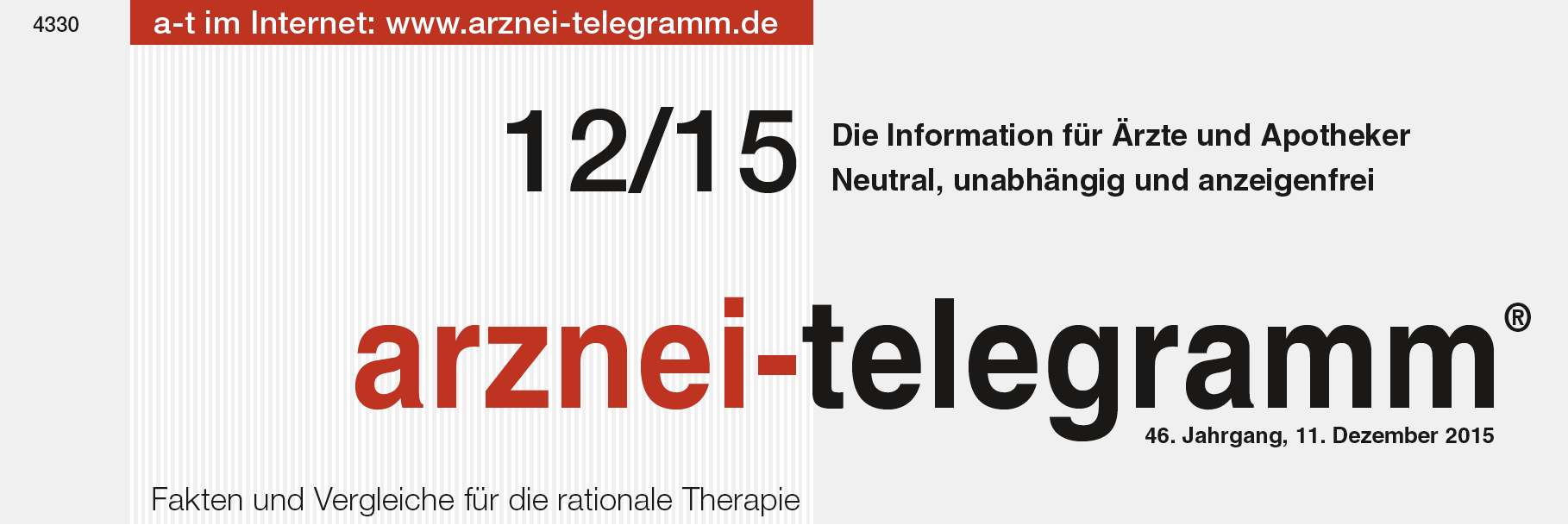
a-t 2015; 46: 126
MELATONIN (CIRCADIN): HALLUCINATIONS?
The New Zealand drug regulatory authority has reported on three patients suffering from hallucinations during the night after taking the neurohormone melatonin (CIRCADIN). In all patients symptoms improved after they stopped taking the drug, which is offered against primary sleep disorders. Two of those affected were not taking any other medications (1).
To date, hallucinations have been listed in the prescribing information as a possible adverse reaction neither in New Zealand nor in Germany (1,2). However, the European database of suspected adverse drug reaction reports EudraVigilance documented at least ten similar reports up to October 2015 (3). It is noteworthy that more than half of those affected were children and adolescents, although melatonin is only approved for use in adults aged 55 or over. According to the Summary of Product Characteristics (SPC), in children aged 0 to 18 years, neither safety nor efficacy have been proven yet (2). Despite the lack of data in this age group (2) the neurohormone is obviously used off label not only in Europe: at the beginning of 2015 an Australian sleep researcher warned of the increasing prescription of melatonin for children in light of uncertainty about long-term safety (4).
Since melatonin was introduced in 2008, we have advised against the use of the drug, which in any case has only marginal efficacy (a-t 2008; 39: 45-6). According to a meta-analysis published in 2013 that included 19 randomised studies, the majority of which were small (fewer than 50 participants) and short (up to four weeks), the benefit in primary sleep disorders is negligible: compared to placebo, sleep onset latency was reduced by seven minutes on average, and the effective sleep duration was increased by eight minutes (5).
| (M = meta-analysis) | ||
| 1 | Medsafe: Safety information, 20 July 2015; http://www.medsafe.govt.nz/safety/EWS/monitoring-communications.asp#Melatonin | |
| 2 | Medice: SPC CIRCADIN, as at July 2015 | |
| 3 | EMA: EudraVigilance, to be found at http://www.adrreports.eu | |
| 4 | KENNAWAY, D.J.: J. Pediatr. Child Health 2015; 51: 584-9 | |
| M | 5 | FERRACIOLI-ODA, E. et al.: PLoS ONE 2013; 8: e63773 (6 pages); http://www.plosone.org/article/fetchObject.action?uri=info:doi/10.1371/journal.pone.0063773&representation=PDF |